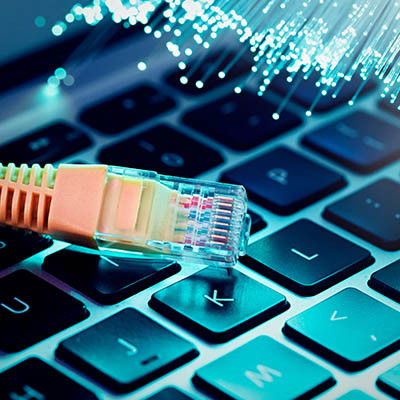Master Solutions Blog
The History of Internet Speeds Tells You a Lot About How Far We’ve Come
The Internet has become an indispensable part of our lives. Those who have been online since the mid-90s have witnessed a dramatic transformation in how we use it. Today's lightning-fast, always-on connectivity has replaced yesteryear's slow, dial-up connections. Let's explore how Internet speeds have evolved over the past three decades.
1994: The Dawn of the Internet
In the early days of the commercial Internet, the experience was far removed from what we know today. Users sat at bulky desktop computers with CRT monitors, connecting to the Internet via traditional telephone lines. The familiar sound of the dial-up modem handshake still resonates with many of us.
Standard dial-up connections offered a paltry 56 kbps, making even simple tasks like loading images incredibly slow. For instance, a typical 3.5 MB smartphone photo would take over eight minutes to download. This limited the Internet's functionality, confining it primarily to text-based websites.
2004: Broadband Takes Center Stage
While dial-up persisted, broadband connections gained traction in the early 2000s. DSL and cable modems offered significantly faster speeds, paving the way for a more dynamic Internet experience. Businesses began to see the Internet as a valuable tool for expanding their reach, and social media platforms emerged.
Broadband speeds in the 2000s ranged from 256 kbps to 1 Mbps, substantially improving dial-up. This enabled users to enjoy multimedia content, such as streaming videos and downloading large files. The Internet was no longer just a tool for information retrieval; it became a platform for entertainment and communication.
2014: The Mobile Revolution
By 2014, the Internet had become integral to our daily lives. The rise of smartphones and tablets transformed how we access and consume content. Mobile Internet technologies like 3G and 4G LTE provided 10-50 Mbps speeds, allowing users to stay connected on the go.
2024: A Gigabit Future
Today, the Internet supports various activities, from streaming high-definition videos to working remotely. Fiber optic technology has pushed speeds well beyond 1 Gbps, making even the most demanding tasks effortless.
In just 30 years, Internet speeds have gone from a trickle to a torrent. This incredible progress has transformed how we live, work, and interact with the world. As we look to the future, imagining what new possibilities will be unlocked by even faster Internet connections is exciting.


Comments